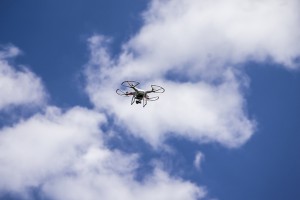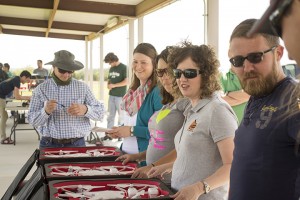Droning on
Categories: Information
I am the eye in the sky
Looking at you
I can read your mind
–Alan Parsons
New technology is great. I get excited about the possibilities of how new technology can improve our lives, whether that’s our personal lives, our work lives or something else. I really love seeing innovations and technologies that allow people to do things they weren’t able to do before, or to do things more easily.
 That’s why I was so excited to attend the “4-H, Agriculture and UAVs” in-service on Tuesday – UAVs (Unmanned Aerial Vehicles) are just neat, and I was hoping there were a lot of really cool applications for them in Extension. I was ready to start buying them for my counties and helping them set them up.
That’s why I was so excited to attend the “4-H, Agriculture and UAVs” in-service on Tuesday – UAVs (Unmanned Aerial Vehicles) are just neat, and I was hoping there were a lot of really cool applications for them in Extension. I was ready to start buying them for my counties and helping them set them up.
The good news is that UAVs are as cool as I thought, even if we only got to play with some small ones. Jeff Sallee from 4-H and Dr. Jamey Jacob from MAE took us out to OSU’s Unmanned Aircraft Flight Station and let us fly some DJI Phantom 2 quadcopters. We could see how the UAVs used their attached cameras to look at things on the ground. It was amazing!
 The bad news is that there’s currently no real applications for agriculture. The FAA prohibits ALL commercial use of UAVs unless a specific exemption for such use is obtained from the agency. There ARE people who are using UAVs for ag already, true. However, they are doing so in violation of Federal regulations and are probably assuming a great deal of liability should there be an accident/incident involving one of their craft. (Here’s an example of the sorts of thing that can happen: https://www.youtube.com/watch?v=law1SsMtg_g) The FAA will issue “Cease and Desist” notifications if they become aware that someone is using a UAV for commercial purposes without the proper exemption.
The bad news is that there’s currently no real applications for agriculture. The FAA prohibits ALL commercial use of UAVs unless a specific exemption for such use is obtained from the agency. There ARE people who are using UAVs for ag already, true. However, they are doing so in violation of Federal regulations and are probably assuming a great deal of liability should there be an accident/incident involving one of their craft. (Here’s an example of the sorts of thing that can happen: https://www.youtube.com/watch?v=law1SsMtg_g) The FAA will issue “Cease and Desist” notifications if they become aware that someone is using a UAV for commercial purposes without the proper exemption.
Another issue for ag use is that FAA regulations currently prohibit flights above 400 feet AGL*. Agriculture specialists tell us that good (in the sense of useful) photos of crops requires a height of more than 1000 feet AGL. FAA regs also require constant control of UAVs in flight (that is, the craft cannot be on autopilot) which means that several operators may be required to cover a large area.
However there are issues outside government regulation. Small UAVs (like the ones we were flying) don’t have a lot of range or speed which makes it difficult to cover large areas. Dr. Brian Arnall (OSU Plant and Soil Sciences) told us that current UAVs are significantly slower than other methods to the extent that he felt them to be useless for the task, at least for the present. The example presented was crop scouting which could be accomplished with current methods in a fraction of the time it takes a UAV to perform the same task.
“For the present” are important words to keep in mind when considering UAVs. The current state, whether the technology or the regulations, is not fixed in stone. The FAA is working to define better regulations for using UAVs and appears to recognize that commercial use is inevitable. They would, however, like to have good safety regulations in place before Amazon begins making drone deliveries. The technology is improving, and companies – some located in other countries – are developing UAVs with agricultural capabilities. (Precisionag.com is a good place to look for ag UAV news.) I suspect that within the next ten years we’ll see UAVs finding legal use in ag purposes, whether crop scanning or something else.
In the meantime? One of the in-service speakers compared the state of non-government UAVs today to the state of personal computers in about 1979-1980. Most people aren’t using them, most people may not even be aware of the kind of things you can do with them, but the potential for growth is there, and as hobbyists and enthusiasts find new ways of using the technology and as manufacturers incorporate those ideas into their designs, the result will be improved use of the technologies. in the meantime, an excellent way for Extension to be involved is through 4-H. There are numerous high-school and college competitions using UAVs, many also incorporating robotics techniques for autonomous behavior. These seem like a good way to get our future UAV experts started with the technology while keeping an Extension focus.
Further Information:
http://knowbeforeyoufly.org/ – a good resource for those who want to fly drones.
http://dronelife.com/ – a one-stop shop for the newest drone news.
http://www.faa.gov/news/press_releases/news_story.cfm?newsId=18295 – The new proposed FAA rules.
http://www.regulations.gov/#!documentDetail;D=FAA-2015-0150-0017 – The open docket for the new rules.
* Above Ground Level